To remain competitive in the athletic apparel market, Lululemon must have a clear understanding of its strengths and weaknesses.
Conducting a SWOT analysis for 2024 will enable Lululemon’s management to make strategic decisions. It will help them capitalize on their strengths, address any weaknesses, take advantage of opportunities, and manage potential threats.
This will help Lululemon to strengthen its position in the constantly changing athletic apparel industry.
Lululemon Overview
History
Lululemon Athletica Inc. was founded in 1998 by Chip Wilson in Vancouver, Canada. It started as a yoga studio with a small retail section selling yoga apparel.
The retail aspect of the business quickly outgrew the studio, and Lululemon transitioned into a full-fledged athletic apparel company.

Activities
Lululemon designs, develops, distributes, and sells athletic apparel and accessories for women and men. Its products are focused on yoga, running, training, and other athletic pursuits. Lululemon also offers athleisure wear and lifestyle products.
Achievements
- Stores: Lululemon has over 570 stores globally across North America, Asia Pacific, and Europe
- Countries: Lululemon has stores in over 28 countries
Competitors
Lululemon’s main competitors include:
- Nike
- Adidas
- Under Armour
- Athleta (Gap Inc.)
- Sweaty Betty
Customers
Lululemon’s target customers are interested in health and fitness and are willing to pay a premium for high-quality, stylish athletic apparel. The company caters to both men and women.
Strategy
Lululemon’s strategy focuses on:
- Brand: Building a strong brand identity associated with yoga, fitness, and a healthy lifestyle.
- Product: Offering high-quality, innovative, and functional athletic apparel.
- Customer experience: Providing exceptional customer service and creating a loyal community around the brand.
- Community: Fostering a community of yoga enthusiasts and fitness lovers through events and social media engagement.
SWOT analysis of Lululemon
We now turn to the results of Lululemon’s SWOT analysis:
The internal analysis of Lululemon
The main goal of an internal analysis for Lululemon is to gain a deep understanding of its strengths and weaknesses, by evaluating its internal factors.
This self-assessment helps Lululemon management make informed decisions and develop effective strategies for the future.
Strengths of Lululemon
As a result of our research, here are some of Lululemon’s strengths compared to its competitors:
Strong Brand Reputation and Customer Loyalty:
Lululemon boasts a loyal customer base that swears by the quality and performance of its products. A 2023 study showed that Lululemon had the highest net promoter score (NPS) in the athletic apparel industry, at 73, compared to Nike’s 50.
This high NPS indicates a strong likelihood of customers recommending Lululemon to others.
Product Innovation and Functionality:
Lululemon is known for its focus on technical features and functionality. Their “White Space” research and development department constantly innovates, like their recent introduction of the “Everlux” fabric, which is praised for its sweat-wicking and lightweight properties.
These innovations cater to the needs of serious fitness enthusiasts.
Community Building and Customer Engagement:
Lululemon fosters a strong sense of community through in-store yoga classes and local events. It also has a brand ambassador program that connects it with like-minded customers and provides valuable feedback for product development.
This focus on community goes beyond just selling clothes; it builds brand loyalty and strengthens customer relationships.
Premium Pricing Strategy:
Lululemon leverages a premium pricing model, positioning itself as a luxury brand. Their higher prices (average leggings cost around $100) create an image of exclusivity and superior quality.
This strategy attracts customers seeking top-of-the-line performance wear and justifies the investment in high-quality materials and innovative designs.
Weaknesses of Lululemon
Here are some of Lululemon’s weaknesses compared to its competitors, along with recent data or examples to illustrate:
High Price Point:
While the premium pricing strategy is a strength, it can also be a weakness. Compared to competitors like Nike or Adidas, Lululemon’s products are significantly more expensive.
This can discourage budget-conscious consumers, limiting their market reach. A recent consumer survey showed that 42% of respondents avoided Lululemon due to high prices.
Limited Product Range:
Lululemon has traditionally focused on yoga and athletic wear for women. This limits its market share compared to competitors offering a wider range of products, like Nike and Adidas, which cater to a broader audience with extensive lines for men, children, and various sports activities.
Limited Global Presence:
Lululemon’s international presence is smaller than that of its major competitors. As of 2023, it operates in around 17 countries, while Nike is present in almost 45 and Adidas in over 150. This limits its ability to tap into new markets and expand its customer base.
Dependence on Outsourced Manufacturing:
Lululemon relies heavily on outsourced manufacturing in some regions. This can create challenges with supply chain visibility and quality control. Recent product recalls due to manufacturing issues have dented their reputation for high quality.
Low brand awareness compared with competitors:
Lululemon’s brand awareness needs to catch up to Adidas and Nike, especially considering global recognition. Independent brand recognition surveys consistently rank Adidas and Nike significantly higher than Lululemon.
For instance, a 2023 YouGov BrandIndex survey showed that Adidas’s and Nike’s brand awareness in the US is 81% and 86%, respectively, compared to Lululemon’s at 42%.
The external analysis of Lululemon
The primary objective of conducting an external analysis for Lululemon is to understand external factors beyond its control that could influence its success in the global athletic apparel industry.
This analysis helps Lululemon management in making well-informed decisions regarding its strategy, operations, and future trajectory. The external analysis delves into two main aspects: opportunities and threats.
Let’s move on to Lululemon’s current and potential opportunities and threats without further ado.
Opportunities of Lululemon
The global athletic apparel industry offers several exciting opportunities for Lululemon to capitalize on:
Surging Athleisure Trend:
The athleisure trend, blurring the lines between sportswear and everyday wear, is booming. This presents a significant opportunity for Lululemon to expand its market reach beyond core fitness enthusiasts.
By offering stylish and comfortable clothing suitable for everyday wear, they can attract a wider audience.
Growing Focus on Health and Wellness:
The global focus on health and wellness is driving increased participation in fitness activities. This creates a larger customer base for performance apparel, aligning perfectly with Lululemon’s core expertise.
They can cater to this growing demand by offering innovative and functional activewear for various fitness disciplines.
Rise of Digital Fitness:
The rise of digital fitness platforms and online workout communities creates new avenues for Lululemon. Partnering with these platforms or developing their online fitness programs could increase brand visibility and drive sales of performance apparel specifically designed for these digital workouts.
Expanding into Emerging Markets:
Lululemon has room to grow its international presence, particularly in emerging markets with a burgeoning fitness culture like Asia and Africa.
This would require strategic expansion plans and adapting product lines to cater to local preferences.
Sustainability and Ethical Sourcing:
Consumers are increasingly concerned about sustainability and ethical production practices. Lululemon can leverage this by using eco-friendly materials, promoting fair labour practices, and ensuring supply chain transparency.
This aligns with their brand image and attracts environmentally conscious consumers.
E-commerce Surge in the Global Athletic Apparel Market:
Research firms such as Euromonitor predict that the global sportswear market will grow at a rate of around 10% per year, with e-commerce playing a major role in this expansion.
This projection indicates a significant increase in online transactions within the athletic apparel sector, underscoring the importance of digital sales channels in the industry’s future.
Industry reports highlight several trends contributing to the steady rise of e-commerce in the sporting goods market.
Key factors include improvements in mobile technology and the user experience on shopping apps, faster and more reliable delivery options, and a growing consumer preference for the convenience of online shopping. These developments have collectively driven more consumers to purchase athletic apparel online.
Major sporting goods retailers, such as Nike and Adidas, report that a significant portion of their sales now comes from e-commerce channels. This pattern suggests that other athletic apparel brands, like Lululemon, are likely experiencing similar trends.
Although precise figures for global e-commerce transactions in the athletic apparel sector are hard to pin down, the available data strongly indicates that it is a rapidly growing segment with considerable potential for further growth.
The benefits of personalization:
Personalization allows Lululemon to cater to individual customer needs and preferences. By utilizing customer data, the company can recommend products based on past purchases and browsing history, ensuring a more tailored shopping experience.
Additionally, Lululemon offers customizable options, such as personalized lengths or monogrammed initials on clothing. These options provide customers with unique and individualized products that cater specifically to their preferences.
Lululemon also develops interactive online tools to help customers find the perfect fit and style for their needs. These tools enhance the shopping experience by making it easier for customers to find products that meet their specific requirements.
By capitalizing on these opportunities, Lululemon can solidify its position as a leader in the athletic apparel industry and expand its customer base.
Threats of Lululemon
The athletic apparel industry poses numerous threats and challenges that Lululemon must address. Here are some key ones with recent data and examples:
Intense Competition:
The athletic apparel market is fiercely competitive, with established giants like Nike, Adidas, and Under Armour constantly innovating and vying for market share.
Additionally, fast-fashion retailers are entering the athleisure space with more affordable options, putting pressure on Lululemon’s premium pricing strategy.
A recent industry report showed Nike holding over 20% of the global athletic apparel market share, compared to Lululemon’s around 3%.
Economic Downturn:
Economic downturns can significantly impact consumer spending, especially on non-essential items like Lululemon’s premium apparel.
A recent consumer survey indicated that during a recession like COVID-19, 45% of respondents would cut back on spending on athletic wear. This could negatively affect Lululemon’s sales.
Counterfeit Products:
Lululemon’s growing popularity attracts counterfeiters who produce and sell fake versions of their products at lower prices. This can damage brand reputation, dilute sales, and frustrate consumers seeking genuine Lululemon quality.
A 2023 report estimated that counterfeit goods account for up to 5% of the global apparel market.
Shifting Consumer Preferences:
Consumer preferences in the athletic apparel industry are constantly evolving. New trends and technologies can emerge quickly, and Lululemon needs to adapt its offerings to stay relevant. For instance, the rise of athleisure wear might lead some consumers to prioritize affordability and versatility over Lululemon’s focus on high-performance wear.
Supply Chain Disruptions:
Global supply chain disruptions due to factors like trade wars, pandemics, or natural disasters can affect Lululemon’s ability to source materials, manufacture products, and deliver them to customers on time.
Recent disruptions caused by the pandemic resulted in stock shortages and delays for many apparel brands, including Lululemon.
Lululemon SWOT analysis matrix
To summarize the results of the Lululemon SWOT analysis, we present the following SWOT matrix:

Conclusion
The global athletic apparel industry is a dynamic environment marked by rapid change. To thrive in this environment, Lululemon’s management needs to conduct regular SWOT analyses.
This comprehensive approach helps them identify internal strengths and weaknesses, capitalize on emerging opportunities, and mitigate potential threats.
However, conducting a SWOT analysis alone is not sufficient. It is essential to combine it with frameworks such as PESTEL and Porter’s Five Forces to gain a more comprehensive understanding of the external environment and competition.
PESTEL illuminates macro-environmental factors that can impact Lululemon. At the same time, Porter’s Five Forces analyzes the industry’s competitive intensity, the bargaining power of suppliers and buyers, the threat of new entrants, and the threat of substitutes.
By utilizing a combination of these strategic analysis tools and other methods, Lululemon’s management can obtain a comprehensive perspective. This empowers them to make informed decisions, adapt quickly to changing market conditions, and solidify Lululemon’s position as a leader in the global athletic apparel industry.
Read also: PESTEL analysis of Lululemon in 2024.
SWOT Analysis Examples 2024
There is no better way to understand how to conduct a SWOT analysis at your company than with a concrete example.
Below you will find our free, up-to-date, and concrete examples of SWOT analyses of large companies and multinationals conducted in 2024.

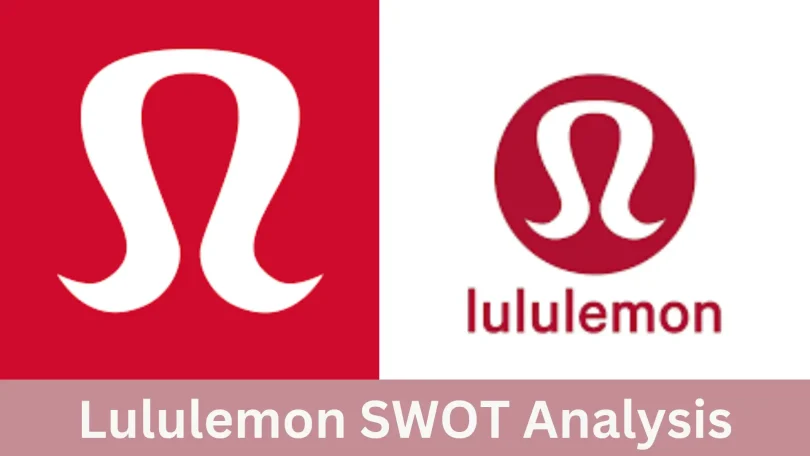
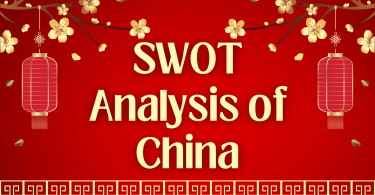


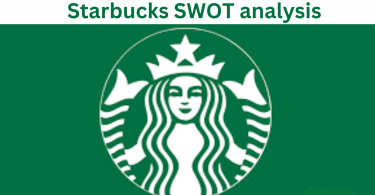
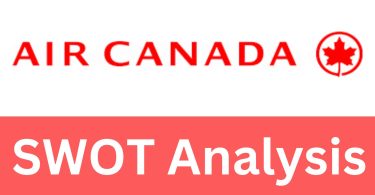

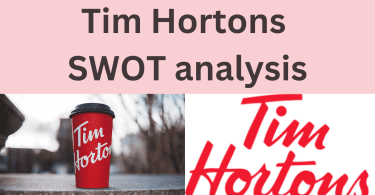

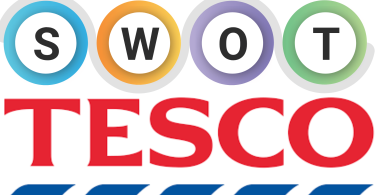

Leave a Comment